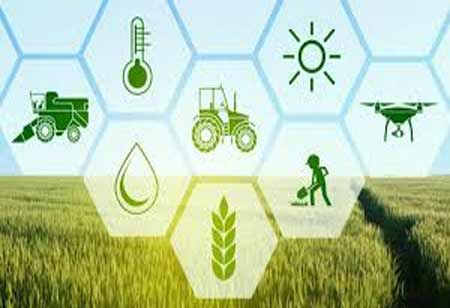Thank you for Subscribing to Agri Business Review Weekly Brief
Key Considerations for Investing in the Agriculture Sector
While investing in agriculture can provide substantial returns, it requires careful consideration of various factors.

By
Agri Business Review | Wednesday, March 19, 2025
Stay ahead of the industry with exclusive feature stories on the top companies, expert insights and the latest news delivered straight to your inbox. Subscribe today.
Fremont, CA: The agriculture sector presents a range of investment opportunities, offering diverse benefits such as inflation hedging, cash flow potential, and fixed asset appreciation. However, the sector also poses unique challenges that can complicate investment decisions. Successful investment in agriculture requires an understanding of various risks and opportunities that can affect long-term profitability. Below are five key issues investors must consider when evaluating agricultural investments.
The Importance of Secure Water Access
Although water is essential to agriculture, crop types, and geographic locations have a substantial impact on its availability. Depending on the temperature and local environment, different crops have different water requirements, which might change over time. Cotton, for instance, needs nearly twice as much water per hectare as grapes. As a result, before making any agricultural investment, investors need to evaluate the infrastructure for water supply.
This includes evaluating the farm's ability to maintain an adequate water supply during dry spells or weather variations, as well as the reliability of the water source, whether it originates from on-site wells or shared regional resources. Any agricultural operation's long-term survival depends on having safe access to water.
Production Levels as an Indicator of Future Performance
In the agriculture sector, current production levels may not always reflect future performance. Investors often rely on existing production as a predictor of future returns, but this approach can be misleading. Several factors can influence production, such as plant maturity, soil management practices, irrigation methods, and climate conditions.
Young plants or crops in early stages may not yield at their full potential, while older crops may soon enter a phase of declining productivity. Therefore, when evaluating an agricultural investment, it's essential to focus on potential production under optimal conditions rather than basing decisions solely on present output.
Variability in Agriculture Property Cost Structures
The cost structures of agricultural properties can differ significantly depending on labor prices, location, land size, and other operational considerations. Land purchase prices, labor costs, and crop management inputs are examples of costs that vary according to regional and market conditions. Profitability may also be impacted by outside factors like labor shortages or growing material prices.
To determine how a company's financial model stacks up against its competitors, investors should compare the cost structures of agricultural enterprises to industry norms. Predicting long-term performance requires evaluating a farm's cost structure's scalability and adaptability to shifting market conditions.
Price Volatility of Agricultural Products
One of the most significant risks in agriculture is the volatility of product prices. Agriculture markets are highly susceptible to supply and demand imbalances, which can be influenced by unpredictable weather, disease outbreaks, or shifts in consumer preferences.
Moreover, the time lag between planting and harvesting creates additional risk, as the market price of a product may shift significantly from planting to sale. To mitigate these risks, investors should consider flexible forecasting models and evaluate a farm's ability to manage price fluctuations through strategies such as fixed-price contracts or diversified crop portfolios.





